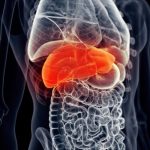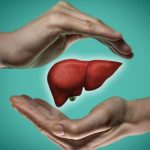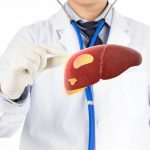Does Fatty Liver Cause diarrhea or Poop Color Changes? 4 Facts (Doctor Explains).
Our content is not intended nor recommended as a substitute for medical advice by your doctor. Use for informational purposes only.
The link between nonalcoholic fatty liver and diarrhea is yet to be established. Diarrhea can occur only in the late stages of the fatty liver when the liver function deteriorates (cirrhosis).
1 . When does fatty liver cause diarrhea.
The basic definition of fatty liver is fat build-up inside your liver cells. This is the simplest and earliest change in the fatty liver.
To understand the relationship between fatty liver and diarrhea, You have to understand the different terminologies used.
Nonalcoholic fatty liver diseases (NAFLD) is subdivided into the nonalcoholic fatty liver (NAFL) and nonalcoholic steatohepatitis (NASH)
NAFLD = NAFL + NASH.
- NAFL (Nonalcoholic fatty liver): refers to the simple accumulation of the fat in the liver (without inflammation).
- NASH (nonalcoholic steatohepatitis): refers to the accumulation of fat inside the liver with subsequent liver inflammation.
- NFLD-related liver cirrhosis: persistent inflammation for years may lead to failure of the liver to perform its functions due to extensive damage (liver cirrhosis).
NAFL (simple nonalcoholic fatty liver) is not known to cause diarrhea (reference) directly. Several factors influence the development of NAFL, mainly genetic factors such as insulin resistance and faulty diet habits.
Only a few small studies found that fatty liver can cause diarrhea by increasing the production of bile acids. Excess bile acids reach the intestine and cause a condition called (bile acid diarrhea).
However, The research evidence that links diarrhea needs more confirmation with more extensive, high-quality studies.
However, up to 18% of people with NAFLD may progress to fatty liver inflammation or NASH (Nonalcoholic Steatohepatitis). The result of untreated inflammation is fibrosis and cirrhosis with loss of liver function.
NASH and (fatty liver)-related cirrhosis may alter your bowel habits and cause diarrhea. Cirrhosis, in particular, is common a common cause of diarrhea.
One study found that 13.3% of people with liver cirrhosis have diarrhea (reference).
2. Other possible explanations.
The link between nonalcoholic fatty liver and diarrhea is yet to be established. However, diarrhea can occur in the late stages of the fatty liver when the liver function deteriorates (cirrhosis).
However, The process of fatty liver cirrhosis may take years or decades to develop.
It is better to consider a non-causal relationship between diarrhea and fatty liver.
Both fatty liver and diarrhea are widespread conditions.
- The prevalence of fatty liver is about 25% of the population (it differs from region to region, see the table below).
- The prevalence of chronic diarrhea is roughly about 6%.
So, the association between fatty liver and diarrhea doesn’t necessarily mean one caused another. You can get diarrhea and fatty liver; each happens for its unique, separate cause.
Possible explanations of diarrhea with fatty liver include:
- Associated bile acid diarrhea (fatty liver increases the production of bile acids).
- Late stages of fatty liver (cirrhosis and fibrosis).
- Metformin treatment of fatty liver: Metformin is famous anti-diabetes medication. It is also used in the treatment of fatty liver.
Metformin commonly causes stomach upset and diarrhea. So, review your list of medications and check if you take metformin.
Consult your doctor if you think metformin is the cause of diarrhea with fatty liver. Don’t stop the medication without medical permission. - Associated food intolerance: Food intolerance is difficulty digesting certain foods. Common examples include lactose intolerance (in milk and dairy products), fructose (in most fruits and honey), and FODMAPs.
Food intolerance is a common cause of diarrhea and flatulence; for example, about 65% of humans have lactose intolerance. - Associated irritable bowel syndrome with diarrhea: A common functional gut disease affecting about 15% of people worldwide.
It is characterized by recurrent abdominal pain, changes in bowel habits (diarrhea or constipation), bloating, and changes in stool form (loose or hard stool). The disease is common, and many people have fatty liver and diarrhea-predominant irritable bowel syndrome. - Other relatively common causes include drug-induced diarrhea, chronic gut infections, celiac disease, etc.
The complete list of the causes of recurrent or chronic diarrhea is discussed in this in-depth article.
3. Does fatty liver cause fatty stool?
Fatty liver is a disease that primarily affects the liver. Simple fatty liver disease is not known to cause fatty stool or fat malabsorption. However, some studies found a link between fatty liver and bile acid diarrhea which is a cause of fatty stool.
However, most people with fatty liver don’t have a fatty stool. If you have a fatty stool, Consult your doctor about the possible causes.
The fatty stool is less likely to be directly related to the fatty liver. However, it would help if you considered other common causes of high fat in the stool, such as:
- Bile duct obstruction (obstructive jaundice) by a stone or a tumor. The condition is characterized by abdominal pain, jaundice, itching, dark urine, and fatty grey stool.
- Celiac disease is a form of malabsorption syndrome. It occurs when a protein called (gluten) induces severe inflammation of the intestine. The severe inflammation causes fat malabsorption and fatty stool.
- Small Intestinal Bacterial Overgrowth (SIBO): overgrowth of the normal bacteria inside your intestine may lead to malabsorption and fatty stools.
- Pancreatic diseases (especially chronic pancreatitis): the deficiency of the enzyme lipase from the pancreas causes characteristic fatty offensive stool.
- Other causes to consider are end-stage liver diseases, Crohn’s disease, cystic fibrosis, etc. Learn More.
4. Does fatty liver change poop color?
Changes in poop color are not frequent in people with fatty liver. All shades of brown are considered normal stools. So, The changes in stool color are often not a cause of concern unless you have diarrhea, black tarry stool, or blood in the stool.
If you have diarrhea with fatty liver, your poop may turn yellow or green. However, the poop color often returns to its standard brown color.
You should worry about poop color with fatty liver only when there is:
- Red blood in the stool.
- Severe watery diarrhea (often yellowish).
- Black tarry stool.
- Clay-colored or grey stool.
- Severe urgency to poop with mucus in the stool.
The above changes in the poop are often not linked to fatty liver. For example, blood in the stool may be due to bleeding piles or fissures. Black tarry stool may occur due to bleeding peptic ulcers. And clay-colored stool occurs with bile duct obstruction with a stone or tumor.
Typical variation of the brown color (yellow, light brown, or dark brown) is usually not a cause of concern with fatty liver unless you have severe diarrhea or tenesmus.
- Evidence-based
- Written by a doctor.

Related Posts:
- Fatty Liver Pain: Causes, Mimics, and Treatment;…
- Norovirus Poop Color Changes & When To Worry (GI…
- 5 Causes of Diarrhea After Eating Fatty Foods & Tips…
- Do Bananas Make you Poop? (GI Doctor Explains).
- 3 Reasons Why Apple Will Make You Poop (GI Doctor Explains).
- Fluffy Poop: 7 Causes & When to Worry (Doctor Explains).






